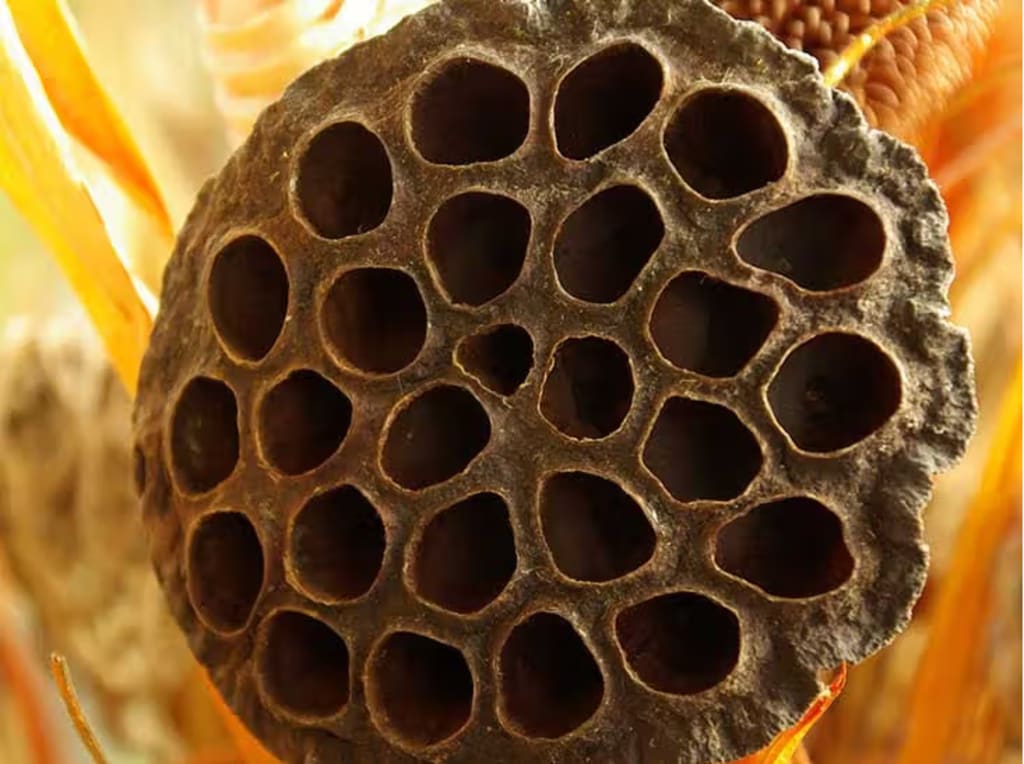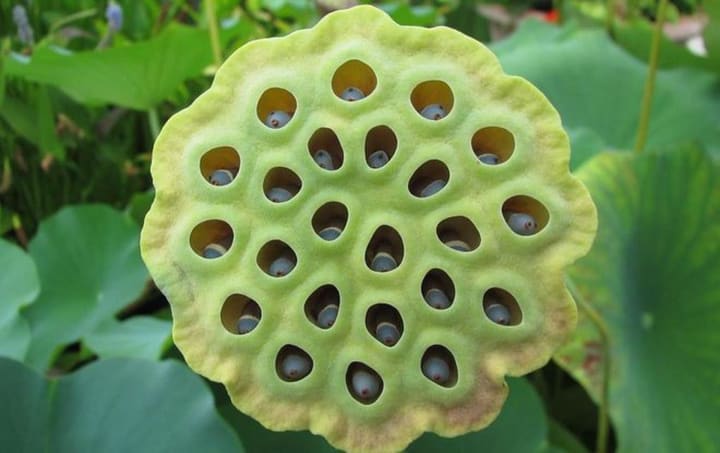
1. What is the fear of round holes?
Does seeing honeycombs, sponges or soap bubbles make you feel trembling, scared... Maybe you have Trypophibia syndrome, also known as fear of round holes.
The name of this syndrome comes from the Greek words "trypta" meaning hole and "phobos" meaning fear. But this term does not exist since ancient Greece. "Trypophobia" first appeared on a web forum in 2005.
Trypophobia is one of many fears of harmless things, such as fear of small round holes, fear of hair, or fear of small things. People with trypophobia have strong physical and emotional reactions whenever they see patterns made up of holes or spots. The larger the cluster of circles, the more uncomfortable they felt.
Researchers disagree about whether trypophobia should be classified as a true phobia. A book about trypophobia, published in 2013, suggested that the phobia may be an extension of biological fear of harmful things. Researchers found that symptoms were triggered by high-contrast colors in a certain graphic arrangement. They suggest that people affected by trypophobia subconsciously associate harmless items, such as lotus seed pods, with dangerous animals, such as the blue-ringed octopus.

Another book about trypophobia published in April 2017 raised controversy on this issue. Researchers surveyed preschoolers to confirm whether their fear of seeing images of small holes was based on a fear of dangerous animals or a response to visual features. Their results showed that people experiencing trypophobia do not have an unconscious fear of venomous creatures. Instead, fear is triggered by the creature's appearance.
The American Psychiatric Association's Diagnostic and Statistical Manual of Diseases (DSM-5) does not recognize trypophobia as an official phobia. More research is needed to understand the full scope of trypophobia and its causes. causes this condition.
Trypophobia is more common in women than men. In one study, about 25% of people with trypophobia also had a relative with the condition.
Research conducted since 2017 on trypophobia shows that there is a possible link between trypophobia and major depressive disorder and generalized anxiety disorder (GAD). According to researchers, people with trypophobia are more likely to also have major depressive disorder or GAD. Another study published in 2016 also noted a link between social anxiety and trypophobia..

Some people with trypophobia may also have other mental disorders, such as:
Severe depression
Generalized anxiety disorder (GAD)
Worry
Panic disorder
Obsessive-compulsive disorder (OCD)
Bipolar disorder
The symptoms of trypophobia look a lot like a panic attack. Some symptoms may appear such as:
Nausea
Short of breath
Heart beat fast
Sweat
Itching, goosebumps
Feel uncomfortable
Visual discomfort such as eye strain, hallucinations...
Depression
Body trembles
Trypophobia is an aversion to the sight of repetitive patterns or clusters of small holes or bumps. It is not officially recognized as a mental disorder, but may be diagnosed as a specific phobia if excessive fear and distress occur. Most affected people experience mainly disgust when they see trypophobic imagery.
Treatment of fear of round holes
There are many different ways to treat trypophobia. The most effective form of treatment is exposure therapy. Exposure therapy is a type of psychotherapy that focuses on changing your response to the object or situation that causes your fear.
Another common form of treatment for trypophobia is cognitive behavioral therapy (CBT). CBT combines exposure therapy with other measures to help you control your anxiety and keep your thoughts from becoming overloaded.
Some other treatments can help you control your phobia, such as:
Talk therapy with a counselor or psychiatrist
Use medications such as beta blockers and sedatives to help reduce anxiety and panic symptoms
Use relaxation techniques, such as deep breathing and yoga
Get regular physical activity and exercise to control anxiety
Practice mindful breathing, observation, listening, and other mindfulness strategies to help deal with stress and anxiety.
Drugs used to treat other types of anxiety disorders are not effective for trypophobia.
About the Creator
PDK
Hope your day is as motivating as this mix
Enjoyed the story? Support the Creator.
Subscribe for free to receive all their stories in your feed. You could also pledge your support or give them a one-off tip, letting them know you appreciate their work.






Comments
There are no comments for this story
Be the first to respond and start the conversation.